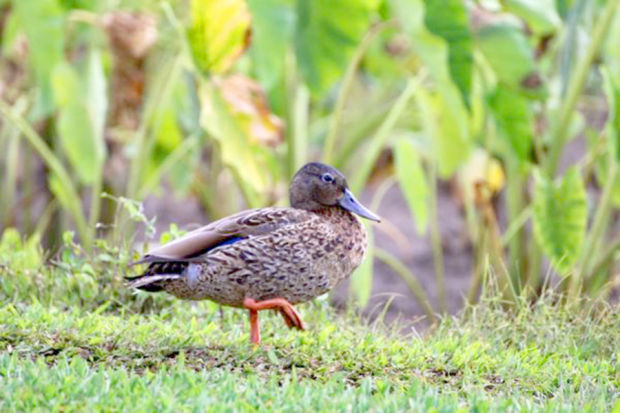LIHUE — Even wildlife biologists have a tough time telling the difference between the endangered koloa (Hawaiian duck) and the common mallard. But they do know that cross-breeding and hybridization between the two is the primary reason the endemic koloa — present
LIHUE — Even wildlife biologists have a tough time telling the difference between the endangered koloa (Hawaiian duck) and the common mallard.
But they do know that cross-breeding and hybridization between the two is the primary reason the endemic koloa — present in the Hawaiian Islands for at least 100,000 years — is now endangered.
But the Koloa Project might save it.
“Though they look very similar to female mallards, with a trained eye you can detect some of their unique characteristics, and we’re working toward an identification key based upon genetic markers to further our conservation efforts,” said Stephen Turnbull, DLNR Division of Forestry and Wildlife koloa communications and outreach coordinator.
To address the koloa’s future, the Department of Land and Natural Resources is collaborating with the U.S. Fish and Wildlife Service and the University of Hawaii Pacific Studies Cooperative Unit on The Koloa Project. The project attempts to provide steps that will ensure its ultimate survival as one of three remaining native waterfowl species in Hawaii — the others being the Hawaiian nene, or goose, and Laysan duck.
Cross-breeding with mallards began sometime in the late-1800s, when the more common mallard was imported to Hawaii for ornamental ponds, hunting and farming. The USFWS has recommended removing feral mallard ducks as a critical step toward saving the Koloa from extinction.
It’s believed fewer than 3,000 true koloa remain in the wild.
“We do know, for example, that the degree of hybridization on Kauai is very low, and we suspect that there may be small remnant populations of koloa on the other main Hawaiian Islands,” said William J. Aila Jr., DLNR chairperson.
DLNR is conducting an online survey, https://www.surveymonkey.com/s/koloa, to gauge public awareness of the koloa.
The first 200 people to complete the survey will receive a custom designed Koloa T-shirt.


